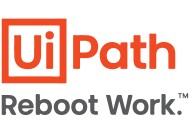Contributed by: UiPath
For most of human history, highly efficient tools were limited to a select few. In the 1700s, you needed an expensive printing press and specialized knowledge to share your opinion on the world’s affairs, but now? Just a Twitter account. Efficiency has been democratized. While the average person benefited from tools like the printing press, they didn’t exactly have one in their living room. Efficient creation tools that scaled were exclusive to “elites.” Enter low-code platforms, a chief information officer’s (CIO) key to more efficient weekdays and far more enjoyable weekends. Low-code builders are ushering in a new future of work. Let’s explore why, and how, CIOs should prepare for this reality.
Low code, meet high adoption
Hype has put a spotlight on low code, and this article isn’t the first to declare it the future of work or the future of software development. Hype often misses that this new tool doesn’t replace one set of builders with another––it widens the spectrum of access.
When business users can build, and IT is free to focus on more strategic work, your business can solve a whole new layer of problems, and become more competitive. Business problems vary in size and exist across layers of a business. Previously, automation solutions problems were the exclusive domain of technology experts in IT and software engineering. At best, business employees would put in requests with their IT departments, and particularly adventurous users might even build their own Microsoft Excel macros.
Low code gives more people than ever the ability to build with the ‘printing press’ of our time: software development. Our businesses will never look the same. Low code has long surpassed “fad” status.
Low code helps during the pandemic
The COVID-19 pandemic hastened the pace of low-code adoption. As the pandemic strained traditional systems, operators of low-code platforms noticed a huge uptick in adoption. Problems outpaced solutions, and organizations reached for tools that could scale to meet those problems. Healthcare organizations, for instance, are using low-code software robots to speed up waiting times and automate test-results reporting.
The pace of low-code platform adoption shows few signs of slowing down. Forbes contributor Ilker Koksal shares Gartner’s prediction that 66% of large companies will use at least four low-code platforms by 2024. The pandemic accelerated adoption of low-code platforms, but CIOs should prepare to embrace them far beyond a temporary crisis.
Low code empowers people to see and solve new problems
Before low-code technology options, business problems were stratified across departments, leaders, and technologies. IT was both a fulcrum and a bottleneck, taking on critical software development, certainly, but never having enough developers to deal with all of the development ideas from across the business.
Think of a marketing department. They have to monitor countless YouTube videos for new comments. There's no easy way for them to read, react, and respond to input from their customers. This, in turn, creates a bad experience for customers. The marketing department could ask their IT team to develop an application that monitors comments and queues them up for response, but that could take months and dev cycles.
With low-code platforms like UiPath, you can have a software robot fetch comments for you and queue them up for a response. That's just what our marketing department does at UiPath. And thanks to the software robot, they’re able to respond to YouTube comments faster and more efficiently. The rise of DevOps did much to free IT from a purely reactive stance, but companies’ software output was still limited by how many technically skilled developers could hire or contract. With low code, employees don’t need IT to solve all their problems. This does two things:
· IT is free to tackle bigger issues that truly require developers’ expertise. They don’t have to devote sprints to task automations, that, while helpful, are not the end-to-end processes most CIOs crave automating. When the entire organization is equipped with a low-code platform, you can prioritize IT’s (expensive) time on features that will propel your business.
· Employees wind up solving problems for their departments, or even companies. With technologies like robotic process automation (RPA) and strong governance systems, centers of excellence (CoEs) can distribute and securely scale solutions made from citizen developers across departments. Take another example from within UiPath. My colleague Anastasia built a time-saving automation that processes contractor payments faster. Our CoE vetted the automation using our own technology, and shared it company wide.
Finding freedom at work
With low code, IT has less low-level work, and business users have access to higher-level solutions. This freedom extends up and down the business.
Most CIOs don’t want to burden their teams with developing task automations. Task automations, while helpful, are better suited for citizen developers in the organization. And most employees want to learn skills to make their workday more efficient. 86% of office workers want their employers to offer opportunities for them to acquire new skills, according to aUiPath survey.
To enable this kind of problem-solving skill set, businesses will have to implement and manage governance programs that make sure low code isn’t uncontrollable. Instead, democratized app building needs to be uniform, intentional, and scalable. That’s where systems like an automation operating model come into play.
In part two, we’ll dive into how low code is making CIOs more competitive and employees more creative.








